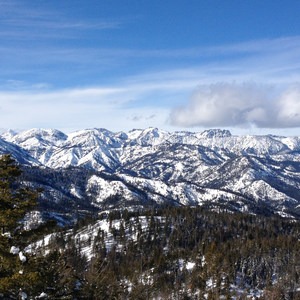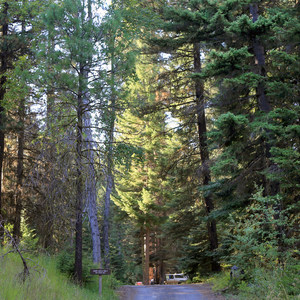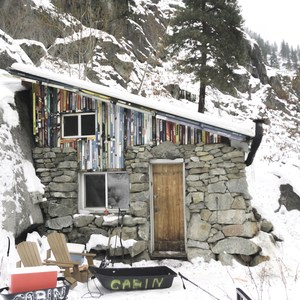In summer, the Swauk Forest Discovery Trail is a relaxed, elaborately annotated introduction to the Blewett Pass ecosystem, an easy 2 miles dotted with interpretive signage. In winter, the trip calls for a little more familiarity with wayfinding. Those helpful signs are buried in the snow, and slopes that practically escape notice on a hike require some careful switchbacking on skis. It's not necessarily a difficult trip, but it does make for an exciting and mildly disorienting backcountry experience in a compact package.
The summer parking area for the trail is a third of a mile up Forest Road 9716 from Blewett Pass Sno-Park (which is equipped with portable toilets if you need them). The route is popular with snowmobilers, but once you reach the turnoff for the Discovery Trail you'll be leaving machine territory. The trail leaves from directly behind the kiosk and keeps straight until it hits another kiosk and veers to the right. Follow the gaps in the trees and stay to the left at any ambiguous forks. The trail stays at a single elevation, moving along a narrow track on the side of the hill until it crests a scoured ridge with some imposing ponderosas and a good view of the Swauk Valley. Turn left here and take the ridge south. You'll then climb the first slope that opens up to your left until you reach the top of the knob (this is where the switchbacks come in). The route heads east along another slope, later widening into a flat trail.
Before you rejoin the road, you'll pass a half-buried signpost indicating two different options for the part of the loop east of the road. The right fork leads to the long loop, which is particularly difficult to follow in deep snow. The left fork takes you to the more thoroughly marked short loop that crosses the road before meandering through the forest and past a view of Diamond Head on the way back to the trailhead.
As an added bonus in all this, a few of those interpretive signs may still be visible, which is helpful if you are having trouble sorting your spruce from your larch, or if you are interested in seeing what porcupine gnaw marks look like. Another kiosk at the trailhead gives more general information about the state of the forest in the area, which is dominated by firs after it was heavy logging in the 1980s. The loop is also part of the Great Washington State Birding Trail's "Sun & Sage Loop," although the pass is a little high up for winter birding.
And if you do stray from the trail at any point, just remember that you're making a big rectangle around a hill, with the southern side of your path cutting across the summit. It's a small, manageable area, even if it does feel remarkably isolated. Watch for downed trees on the northern stretch of the trail.



























Comments
Sign In and share them.